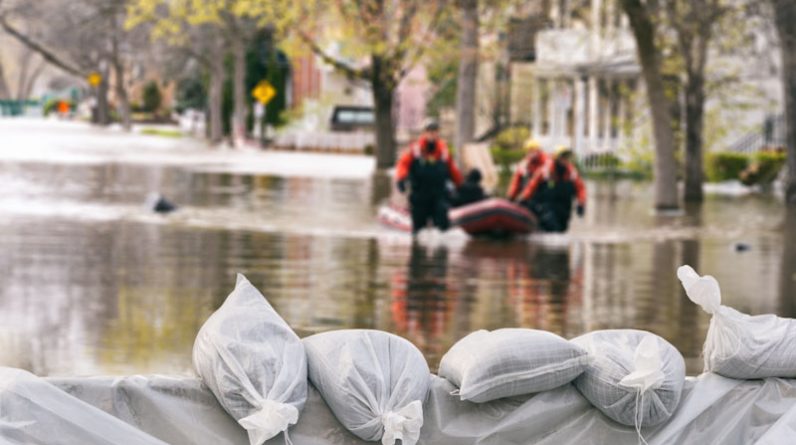We live in a world marked by increasing uncertainty, geopolitical tensions, and unforeseeable disasters, where the concept of prepping has gained significant traction. More and more people are preparing for potential disasters, often focusing on stockpiling food, water, and emergency supplies to weather a wide range of crises.
However, what can preppers learn from one of the most enduring and complex conflicts of our time, the Israel-Palestine war?
A little bit of history hurts no one
The history of Israel’s formation and its impact on Palestine is a complex and contentious subject, marked by a series of events that have shaped the course of the Israeli-Palestinian conflict. Here are the key historical factors that led to the establishment of the State of Israel and how this process laid the foundation for the ongoing territorial disputes with Palestine.
I. The Balfour Declaration and the Mandate Era (1917-1947)
The origins of the Israeli-Palestinian conflict can be traced back to the end of World War I when the British government issued the Balfour Declaration in 1917. This document expressed support for the establishment of a “national home for the Jewish people” in Palestine, then under Ottoman rule. While the declaration promised to protect the civil and religious rights of non-Jewish communities in Palestine, it sowed the seeds of future discord.
Following World War I, the League of Nations gave Britain a mandate to govern Palestine. During the mandate period (1920-1948), Jewish immigration to Palestine increased significantly, fueled by the rise of Zionism, a political and cultural movement advocating for a Jewish homeland. This led to tensions with the Arab majority in the region, who saw their land and identity threatened by the growing Jewish presence.
II. United Nations Partition Plan (1947)
In 1947, the United Nations proposed a plan to divide Palestine into two distinct Jewish and Arab states, with Jerusalem under international administration. The plan was approved despite Arab opposition, leading to outbreaks of violence and ultimately, the Arab-Israeli War of 1948. During this conflict, Israel declared its independence, further exacerbating tensions with its Arab neighbors and displacing hundreds of thousands of Palestinians from their homes.
III. The Palestinian Nakba (1948)
The outcome of the 1948 war, which the Palestinians call the Nakba (catastrophe), led to the establishment of Israel as a state and the displacement of a significant Palestinian Arab population. This period marked the beginning of a long-standing refugee crisis, with Palestinians who fled or were expelled from their homes often unable to return. Israel expanded its territory beyond the boundaries proposed by the UN partition plan, retaining control over West Jerusalem and significant portions of the territory designated for the Palestinian state.
IV. The Six-Day War (1967) and Ongoing Disputes
In 1967, the Six-Day War resulted in Israel capturing the West Bank, Gaza Strip, and East Jerusalem, which had been under Jordanian and Egyptian control. This marked a turning point, as Israel’s control over these territories led to the construction of Israeli settlements and the intensification of the Israeli-Palestinian conflict. The status of these territories, along with the issue of Palestinian statehood, continues to be a point of contention today.
The formation of Israel and its territorial expansion have been deeply entwined with the Israeli-Palestinian conflict. These historical events have left a legacy of grievances, displacement, and competing claims to land that continue to shape the region’s dynamics.
The situation today
This month, the situation in the region escalated significantly. On October 7, militants from Gaza launched thousands of rockets toward Israeli towns and breached the heavily fortified border fence with Hamas sending militants into Israeli territory. According to Israeli authorities, this resulted in the loss of over 1,400 lives, including civilians and soldiers, and the taking of 199 hostages.
The attacks were notable for their unprecedented tactics and scale. Israel had not faced before a terror attack of this magnitude that claimed the lives of so many civilians. Hamas, in this operation, named “Al-Aqsa Storm,” stated that it was in response to perceived Israeli attacks on women, the desecration of the Al-Aqsa mosque in Jerusalem, and the ongoing Gaza siege.
In response to the attack, Israel declared war and initiated “Operation Swords of Iron,” targeting what it identified as Hamas and Islamic Jihad installations in Gaza. Israel also obstructed supply lines for basic necessities to the Gaza population, including fuel and water. Between October 7 and 12, Israel dropped approximately 6,000 bombs on the territory, which is more densely populated than New York, equivalent to the total number of airstrikes launched on the territory during the entire 2014 Gaza War (Operation Protective Edge), which lasted 50 days.
The Israel Defense Forces (IDF) advised civilians in Gaza to leave residential areas immediately for their safety, but some residents found it difficult to identify safe havens, especially with all crossings out of Gaza closed. The situation is further complicated by the hostages held by Hamas. While Hamas claimed that some hostages were killed by Israeli bombings, Israel hasn’t confirmed nor denied this assertion.
Israel imposed a “complete siege” on Gaza, blocking the delivery of water, electricity, fuel, and food until the hostages are released. On Friday the 13th, Israel’s military urged the 1.1 million people in northern Gaza to evacuate their homes immediately, indicating the imminent possibility of a ground invasion. The situation remains highly fluid and subject to ongoing developments.
What should preppers learn from this conflict?
I’ve been following the situation closely and checked various sources to find out more besides what the classic media reports. I believe that there are some things we, preppers, can learn from this, and the current situation serves as a reminder of why we are prepping. Here are my main conclusions:
Israel is far from being a good tourist destination
Nevertheless, Israel continues to draw millions of tourists annually. While the safety situation in the region can be notably unpredictable, a significant number of visitors are drawn to Israel owing to its profound religious and cultural significance.
However, I personally refrain from selecting it as a vacation destination, as I am inclined to avoid placing myself and my loved ones in the midst of an ongoing conflict. This decision is founded on principles of self-preservation and practicality. After all, what justifies taking such a risk? To showcase one’s travels on social media or to add another destination to a travel itinerary?
It’s worth noting that among those held hostage by the Hamas organization, there are tourists who attended an outdoor rave party. If one chooses to visit such locations, it is advisable to ensure stringent security measures are in place, maintain the means for a swift evacuation, and exercise moderation when participating in such events.
However, if there is a compelling reason for your visit, such as business or visiting relatives, it is possible to take steps to enhance your safety. Ultimately, you bear the responsibility for your well-being. Below, we outline key factors to consider when evaluating the safety of traveling to Israel:
Security Situation: Israel has a complex security environment due to the Israeli-Palestinian conflict and regional geopolitical dynamics. There have been occasional periods of heightened tension, demonstrations, and conflicts, particularly in areas like the West Bank and Gaza Strip. Visitors should stay informed about the situation and avoid areas with ongoing security concerns.
Travel Advisories: It’s advisable to check travel advisories from your government or relevant authorities before planning a trip to Israel. These advisories provide updated information on safety and security issues.
Local Guidelines: Follow any security or safety guidelines issued by Israeli authorities and local law enforcement. This may include restrictions on movement in certain areas and adherence to security measures in public places.
Restricted access to firearms is a bad idea
Many of the victims of the Hamas incursion into Israel lacked the means to defend themselves. I’ve come across numerous videos and photos depicting local residents being gunned down, and due to Israel’s stringent gun control laws, they were unable to retaliate.
Israel does not have the same level of civilian access to firearms as seen in some other countries, like the United States. The possession and use of firearms in Israel are subject to strict regulations and are generally limited to certain individuals and purposes. Here are some key points regarding firearms in Israel:
Firearm Ownership: Civilian firearm ownership is highly regulated in Israel. Most Israelis do not have access to firearms for personal self-defense or sporting purposes. Firearm ownership is primarily limited to individuals in specific roles, such as security personnel, law enforcement, and military personnel.
Licensing and Training: To obtain a firearm in Israel, individuals must go through a rigorous process that includes background checks, mental health evaluations, and the completion of training and safety courses. Firearm license applicants are typically required to demonstrate a genuine need for a weapon.
Carry Restrictions: Even those who are granted licenses to possess firearms typically have restrictions on carrying them in public. Firearms are generally required to be stored securely when not in use.
Never put all your trust in the government
The recent attack on Israel serves as a stark reminder that no government can guarantee absolute trust and protection. This incident is being viewed as a significant lapse in internal security and tactical intelligence oversight.
Reports suggest there was a degree of chaos in coordinating a timely response to the attack, and authorities struggled to ensure the safety of their citizens. Once again, this highlights the importance of not relying solely on the government for the safety of your family.
Taking precautionary measures to ensure your loved ones’ safety until government aid arrives is crucial. Whether it involves constructing a secure shelter or adhering to the necessary procedures for firearm ownership, the ultimate responsibility for safeguarding yourself and your family falls on your shoulders.
Conspiracy theories have also emerged, suggesting that the Israeli government had prior knowledge of the attack and allowed it to happen to provide a pretext for a forceful response in Gaza.
Others argue that the military’s readiness to respond was compromised because the attack occurred during the Jewish holiday of Yom Kippur, when a significant portion of military personnel is on leave, and military facilities operate with minimal staff.
Nevertheless, video footage reveals significant lapses in military preparedness, with military bases appearing disorganized and failing to follow established protocols. The absence of active patrols and watchful eyes raises questions about the soldiers’ readiness. Many of those who lost their lives were either inside their barracks, sleeping or congregating around open fires, eating and drinking. It appeared that there was little to no advance warning of the attack.
Don’t trust the media
I’ve come across a considerable amount of conflicting information online, along with reports that often contradict established facts. Both sides are engaged in a substantial amount of propaganda, and regrettably, people rarely take the time to verify sources or conduct their own investigations.
Propaganda primarily serves two purposes: first, it seeks to attract supporters to a cause, often drawing individuals with no prior allegiance to the cause or organization. Second, it disseminates information to justify the cause and the means used to achieve its objectives.
A prominent example of this is the unfounded rumor that Hamas terrorists were decapitating babies and young children, which rapidly spread like wildfire. To date, no evidence of such heinous acts has been confirmed, and the Israeli government has not verified the specific claim that Hamas attackers beheaded infants during their shocking attack.
When U.S. President Joe Biden publicly expressed his outrage at Hamas militants invading southern Israel and allegedly beheading babies at the Kfar Aza kibbutz last weekend, the public reaction was extensive and understandable.
However, subsequent reports indicated that no such beheadings had been substantiated by any Israeli or international source, most likely because they never occurred. This serves as a stark illustration of how false reports can swiftly permeate the public sphere through mass media, often with the intention of discrediting one’s adversaries and supporting one’s allies.
Biden’s statement followed a series of news reports and comments from Israeli officials, most of which have since been toned down or retracted. The allegations of beheadings, challenging to verify, have continued to circulate, partly due to the lack of clarity on the matter.
Alexei Abrahams, a disinformation researcher at McGill University in Montreal, noted that even without the claims of beheaded infants, “the actual facts themselves are horrifying enough to elicit the kind of response one would expect.” Stories involving babies are highly emotive and have historically been used to justify extremely harsh responses. Given the volatile nature of the information environment, such claims are inevitably taken out of context, both intentionally and unintentionally.
The key point here is that the media is primarily driven by viewership, as it generates significant revenue and can be easily swayed to take sides when emotional reactions are triggered. Additionally, it is widely acknowledged that there is no longer a truly free and independent media. It is crucial to conduct your own research and draw your own conclusions, as the truth can be readily manipulated.
There is however one piece of news that should give preppers pause, and that’s the information relayed by FBI Director Chris Wray who warned on Saturday the 14th that there was a spike in domestic terror threats in the US related to the war.
Always be ready to bug out
Switching over to the Palestinian side, from the videos I’ve seen online, it’s evident that many civilians are fleeing their homes with only the clothes on their backs. Some have had to depend on others for transportation due to a lack of fuel for their vehicles. This underscores the importance of having a bug-out bag or a basic survival kit ready in case you need to leave your home. It’s also wise to maintain a cache of essential supplies, particularly water, food, and fuel.
There have been concerns that the IDF (Israel Defense Forces) has targeted food, water, and fuel supplies because they may be used by both civilians and the Hamas terrorist organization. Regardless of this, it’s essential not to leave things to chance and create your own supply cache, regardless of its size.
Another aspect that caught my attention was the evacuation tactics adopted by civilians, whether by choice or necessity. Many of them traveled alongside vehicles such as ambulances, military trucks, and other targets that are typically at risk of IDF actions. It may have been more prudent for them to consider alternative escape routes or at least maintain a safe distance from such targets.
Concluding
The ongoing conflict continues to evolve, and further developments are anticipated from the affected region. As a prepper, this event serves as a stark reminder that no nation is impervious to instability, and we are constantly susceptible to the malevolent actions of our fellow human beings.
There are invaluable lessons to be gleaned from this protracted conflict, and I believe it is imperative to approach it with impartiality. In most cases, I refrain from aligning with any particular side, consistently prioritizing the welfare of myself and my loved ones.









